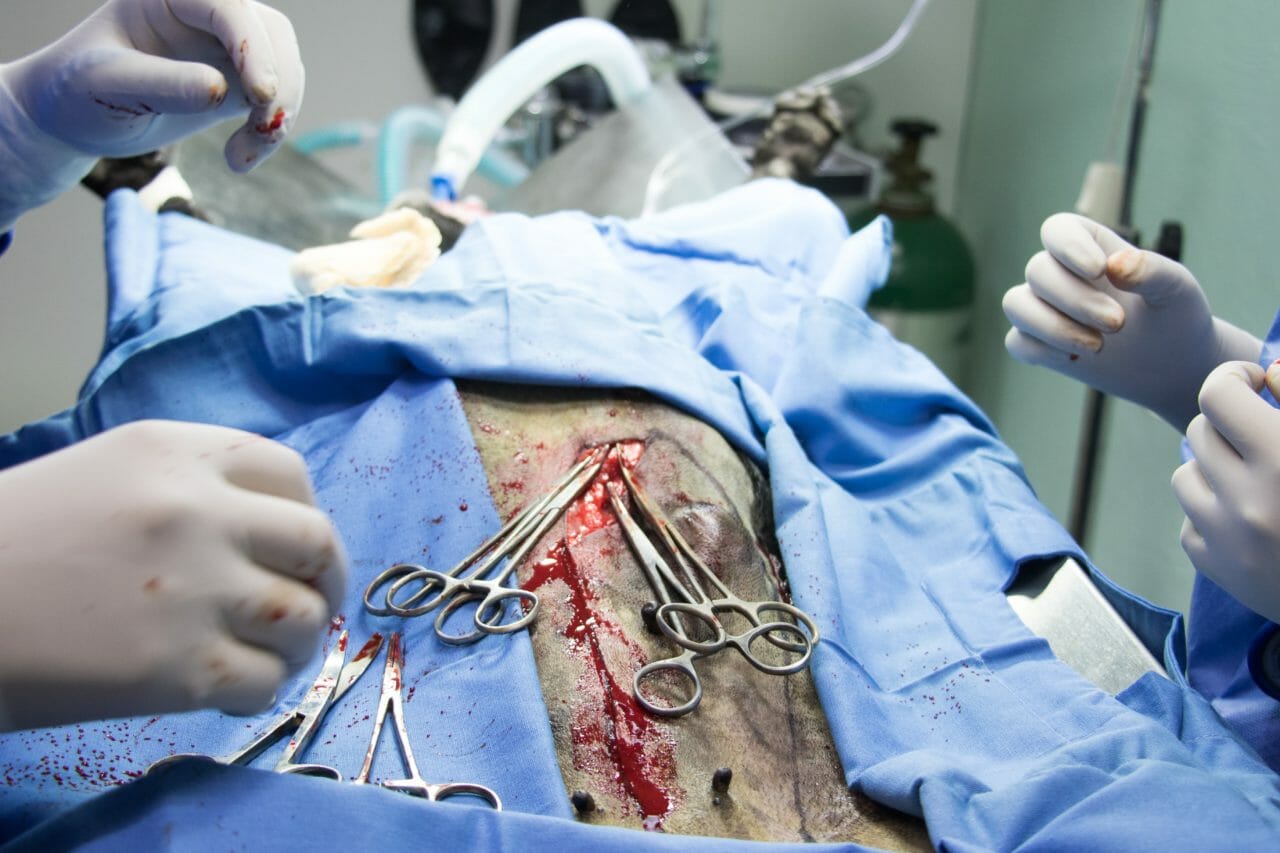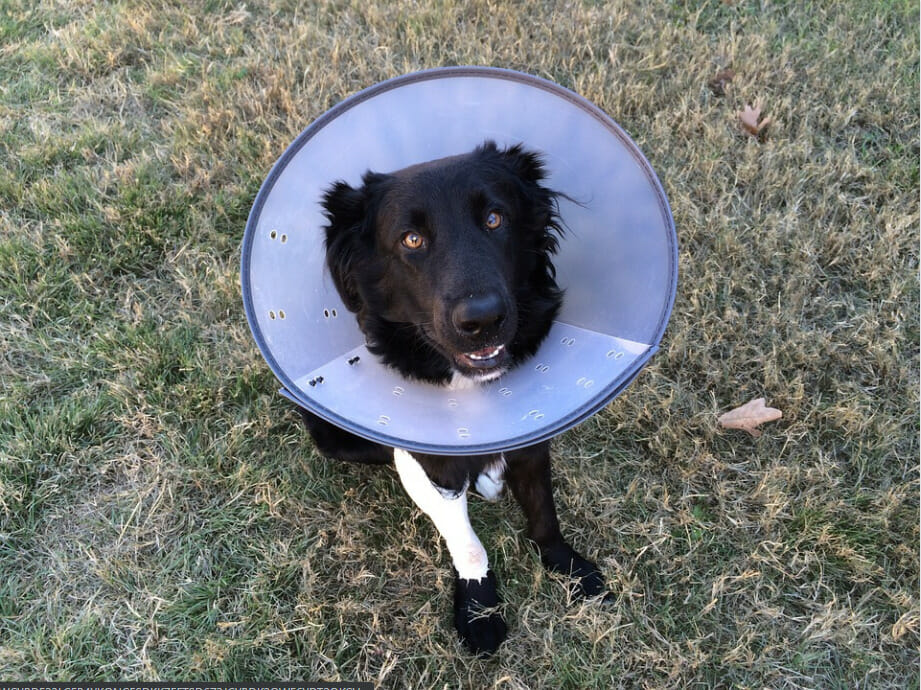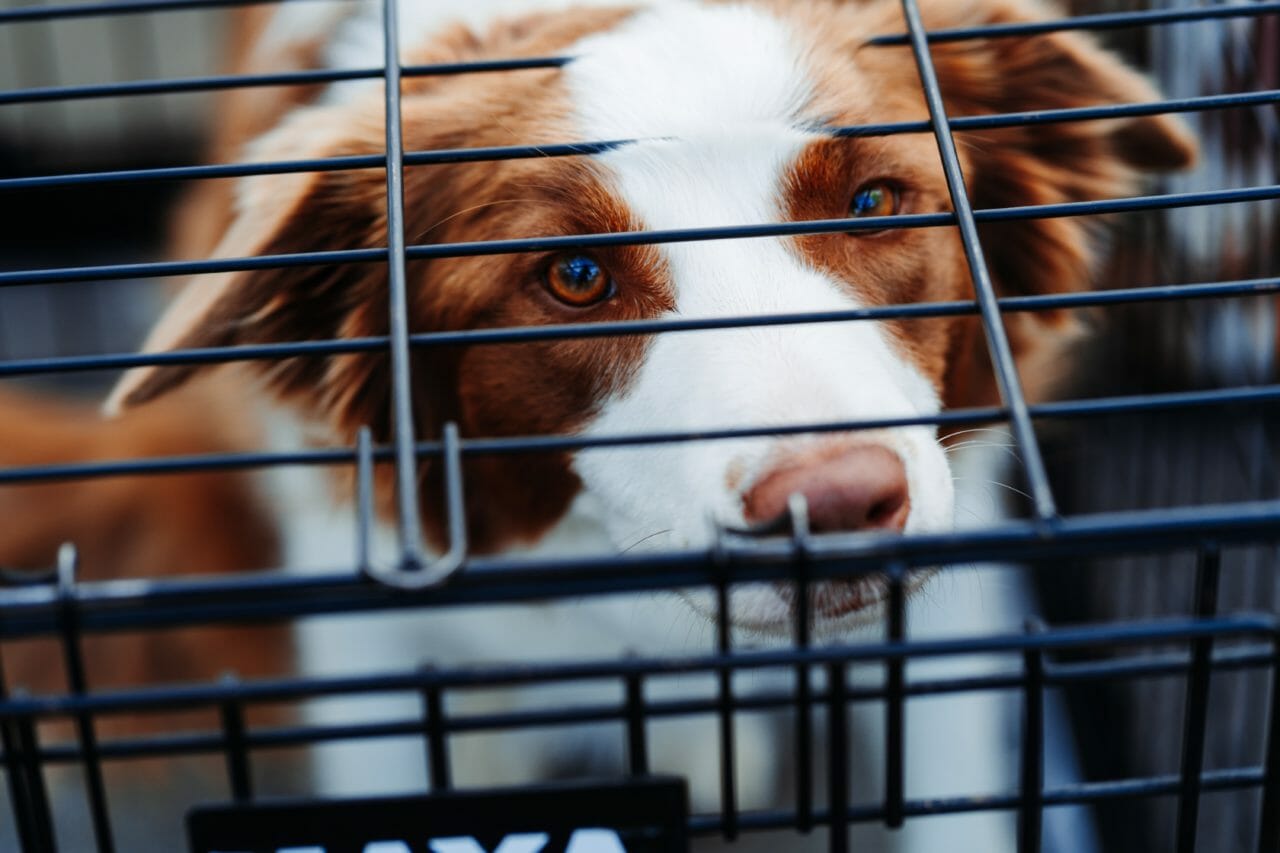While this surgery can seem scary, it’s quite common for dogs.
Dogs always seem to have endlessly bottomless stomachs.. They’re always eating something, right? Well, one reason they can do that is the power of the gallbladder.
If your dog is having problems with his gallbladder, you may be considering dog gallbladder removal surgery. This procedure can be tricky, so it’s important to know what to expect before you decide to proceed.
This article, from the experts at RehabPet.com, will discuss everything you need to know about dog gallbladder removal surgery, including what you can expect and how you can help your furry friend recover quickly and get back to eating the food they love again.
What Is a Gallbladder?
A dog’s gallbladder is a small, pear-shaped sac located under the liver. This sac stores bile, which is produced by the liver and helps the dog digest fats. The bile is released into the small intestine when fatty foods are consumed.
The gallbladder helps your dog’s metabolism and removes toxic substances from their body. Once the food goes through your dog’s intestines, the bile is released and emulsifies fats so your dog can better absorb them.
Why Would You Need to Remove Your Dog’s Gallbladder?
There are a few reasons you might need to consider dog gallbladder removal surgery for your furry friend. The most common reason is because of gallstones.
Gallstones are small, hard stones that form in the gallbladder. They are made up of cholesterol, calcium bilirubin, or calcium carbonate and can range in size from a grain of sand to a golf ball.
These stones cause the bile needed to digest food to become blocked. Since bile is extremely inflammatory, it can cause an internal reaction which can then cause your dog’s gallbladder to erupt.
This eruption is a medical emergency that can be fatal if left untreated. If you think your dog may have gallstones, it is best to take them to the vet to get a diagnosis and treatment plan.
Other causes of needing dog gallbladder removal surgery include:
- Tumors in the gallbladder
- Inflammation of the gallbladder (cholecystitis)
- Infection in the gallbladder
What Are the Signs of Gallbladder Issues?
There are a few signs that you can look for at home to see if your dog may be having issues with their gallbladder. The most common sign is vomiting, which is usually accompanied by a loss of appetite.
If your dog is vomiting and will not eat, it is best to take them to the vet as soon as possible, as this can lead to dehydration and other health problems.
Other signs that your dog may have gallbladder issues include:
- Diarrhea
- Pain in the abdomen when touched
- Fever
- Lethargy
- Jaundice (yellowing of the skin)
- Weight loss
How to Treat a Gallbladder Issue?
The treatment for a dog with gallbladder issues will depend on the severity of the issue.
For mild cases of gallstones, your vet may recommend:
- A low-fat diet
- Medication to dissolve the stones.
For larger or multiple stones surgery will likely be recommended:
- This is because the stones can cause blockages and inflammation, which can be very painful for your dog.
- Called a cholecystectomy, it is a fairly common procedure.
- The surgery is usually done laparoscopically, which means that a small incision is made in the dog’s abdomen, and a camera is inserted to help the vet remove the gallbladder.
In some cases, open surgery may be needed if the dog has multiple stones or if the gallbladder is inflamed. This type of surgery requires a larger incision and a longer recovery time.
What To Expect During Gallbladder Removal Surgery
Before the surgery, your dog will likely need to fast for 12 hours. This is because anesthesia can cause vomiting, and you want to minimize the risk of your pup choking on vomit while under anesthesia.
Your dog will also need bloodwork and a physical exam before the surgery to ensure they are healthy enough for anesthesia.
During the surgery, your dog will be placed under general anesthesia, and a breathing tube will be inserted to help them breathe. The vet will then make an incision in the abdomen and insert a camera to remove the gallbladder.
After the surgery, your dog will be taken to the recovery room, where he or she will be monitored until it’s time to wake up. Once awake and stable, your pup can go home.
What Is My Dog’s Recovery Process for Gallbladder Removal?
The recovery process for dog gallbladder removal surgery is usually pretty straightforward. Your dog will likely be a little groggy from the anesthesia when they first wake up, but they should be back to their normal selves within a few hours.
They may be sore and tired for a day or two after the surgery, so it is best to keep them calm and quiet during this time. They will also need to take it easy on the food for a few days as their digestive system recovers from the surgery.
Your vet will likely give you specific instructions on what your dog can and cannot eat after the surgery, but in general, you will want to stick to a bland, low-fat diet for a few days. You can slowly start introducing more foods into their diet as they can tolerate them.
Other important notes to help your dog recover include:
- Keep them calm and quiet
- Do not let them jump or play
- Give them pain medication as prescribed by your vet
- Provide them with lots of love and make them feel safe
Closing Thoughts
Gallbladder removal can be a scary time for both you and your pup, but it is a common surgery with a relatively quick recovery.
Remember to be sure to follow your vet’s instructions closely and provide your dog with lots of TLC during their recovery process. You will be surprised by how fast your pup will return to his or her normal self!



